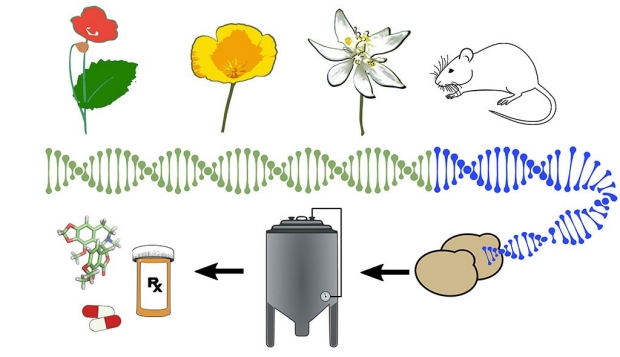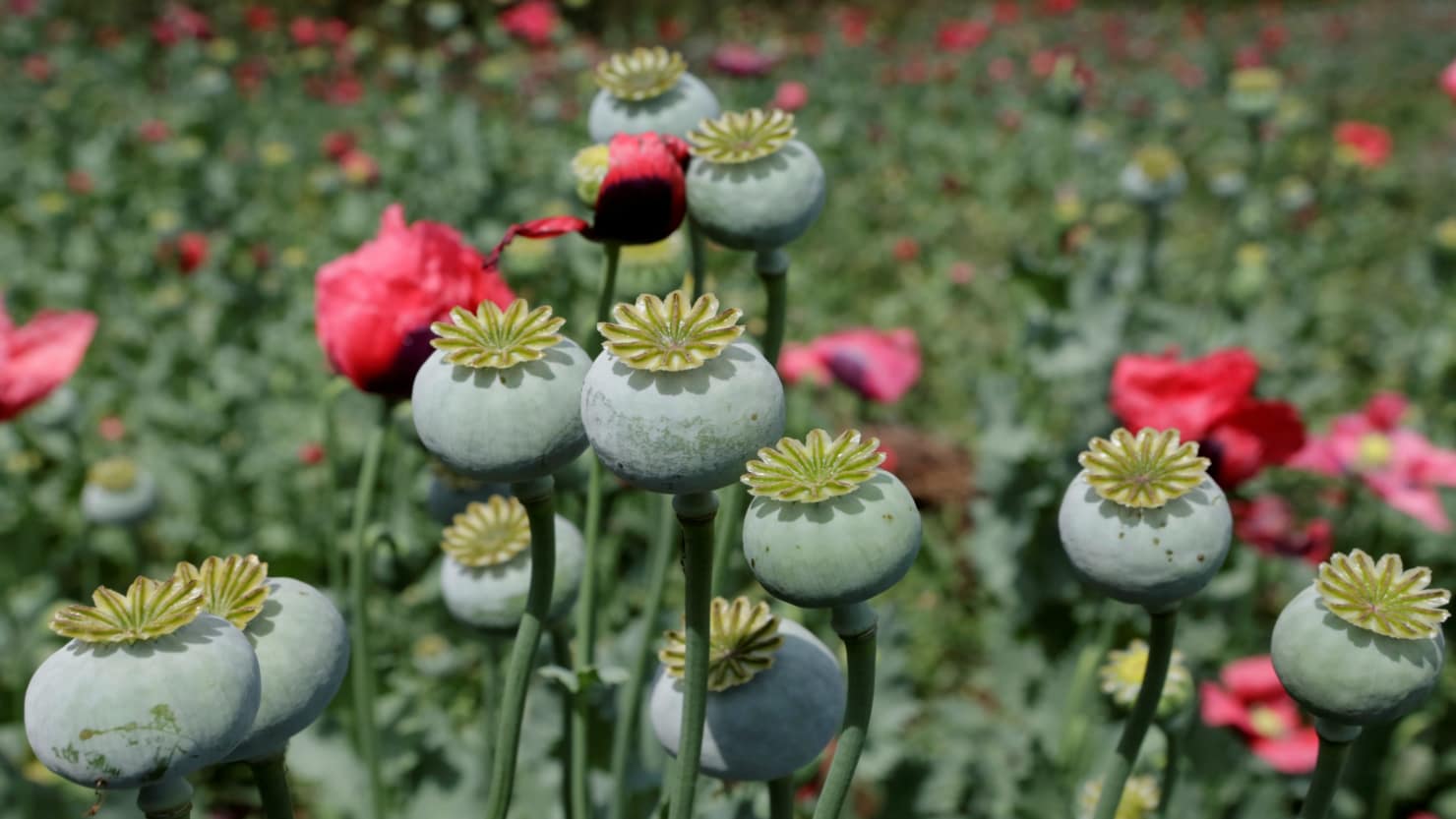New Bioengineering Tech to Manufacture Complex Medicines
Microbial biosynthesis of plant natural products from simple building blocks is a promising approach toward scalable production and modification of high-value compounds. Now, researchers describe a bioengineering process in which brewer’s yeast, along with engineered genes from opium poppies and rats, is used to produce a non-narcotic cough suppressant with potential anticancer properties.
Stanford researchers inserted 25 foreign genes, which came from the opium poppy, other plants and even rats, into the one-celled fungus. All those genes were recipes for enzymes: protein machines that, working together, can build complex substances from simple starting materials.
The researchers also modified some of the plant, rat and yeast genes, as well as the medium in which the yeast proliferates, to help everything work better together.
The result was an 18,000-fold improvement in noscapine output, compared with what could be obtained by just inserting the plant and rat genes into yeast.
Stanford University bioengineering professor Christina Smolke said: “This is a technology that’s going to change the way we manufacture essential medicines.”

Noscapine’s cough-suppressing capability was discovered in 1930. The drug was also found to be a potential oncology therapy during preclinical trials, where it exhibited less impact on healthy cells than currently available chemotherapy.
“Traditionally, we’ve gotten our medicines from the natural world, mainly from plants,” Smolke told me when I interviewed her about the study. “But the plants’ molecular assembly lines have evolved to optimize the plants’ survival, not to churn out buckets of one substance we humans want to get our hands on. Plus, we’re putting them into our yeast strain, which is foreign turf. A yeast cell and a poppy cell have a lot in common, but in some respects they’re as different as Earth and Mars.”
“It’s as if we’re grabbing a couple dozen soldiers from different units, deploying them on Mars, and telling each of them, ‘Now, I want you to get some serious work done here, and I want you to work with these other soldiers you haven’t worked with before,’” Smolke continued. “Good luck with that. We modified them so they’d get along with one another better on this new planet.”
The only viable source of noscapine is opium poppies. Many tons of noscapine are extracted annually from the plant, which takes a full year to mature.
While noscapine itself is harmless, the poppies’ illicit potential requires costly controls and restrictive regulations. Additionally, naturally occurring noscapine must be thoroughly separated from numerous molecular companions, narcotic and otherwise, that don’t occur in yeast.
The yeast Smolke’s group bioengineered can spew out substantial amounts of noscapine in three or four days. The investigators achieved this result by stitching three separate sections of the noscapine biosynthesis pathway into a single yeast strain. They used CRISPR, a gene-editing tool, to alter inserted genes so that the enzymes for which they coded would work most efficiently amid the exotic acidity, osmotic character and chemical composition of their new home.
They also souped up the yeast’s production of a chemical whose levels would have otherwise been too low to sustain robust noscapine production.
“We’re no longer limited to what nature can make,” Smolke said. “We’re moving to an age where we can borrow nature’s medicine-manufacturing processes and, using genetic engineering, build miniature living factories that make what we want.”






























